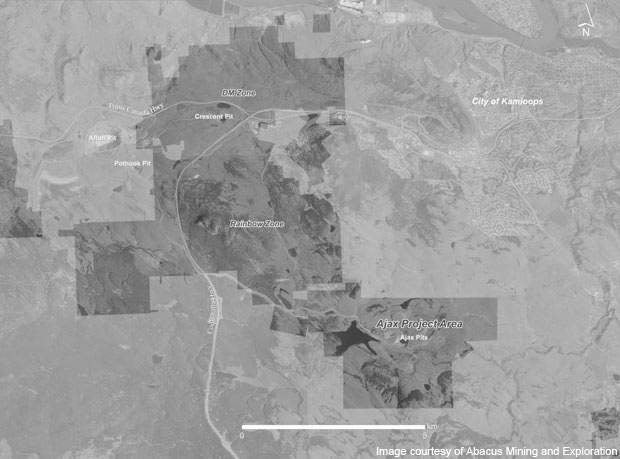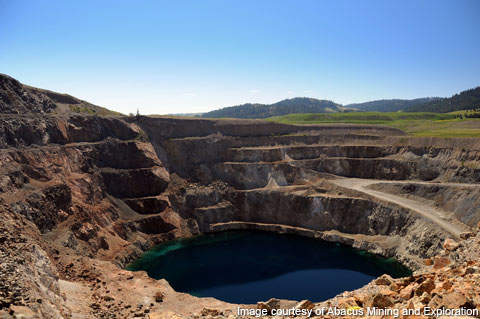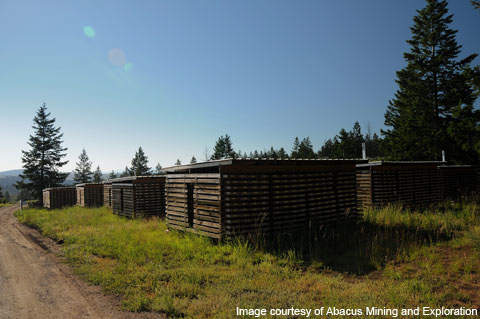Located near Kamloops in British Columbia, Canada, the Afton-Ajax copper-gold project is being developed by New Gold and Abacus Mining and Exploration. The development area, Afton-Ajax Cu-Au District, is operated by Abacus. The mine contains approximately 80% surface resources and 20% underground resources. The open-pit resources are owned by Abacus, which also owns 60% of the underground resources.
Teck Cominco was the operator of Afton-Ajax until it sold the rights to Abacus in November 2005. As part of the deal, Abacus purchased a mill and tailings pond at Afton. The related permits, access rights for the tailings, water and some surface rights were also acquired.
In order to accelerate the development of the mine, Abacus entered into an investment agreement with KGHM Miedz in May 2010 to form a joint venture (JV) that would explore Afton-Ajax.
Under the agreement, KGHM will own 51% of the JV by paying $37m in cash to Abacus. The terms of the agreement allow KGHM to acquire a further 29% in the JV after completing a bankable feasibility study.
TD Securities was KGHM’s financial advisor for the transaction, while CIBC World Markets was the financial advisor to Abacus.
Geology and alkalic copper-gold reserves
Afton-Ajax contains porphyry deposits of alkalic copper-gold. Abacus and New Gold completed Phase I drilling at the site by 2008. Analysis of the drilled samples was done by Eco Tech Laboratory.
Abacus carried out a series of diamond drilling programmes at the site during 2005-08. It completed more than 520,000ft of drilling by 2008. AMEC Americas was contracted in June 2008 to provide engineering services for the project. It also prepared a mineral resource model to estimate the reserves at the deposit.
As of June 2009, the measured and indicated resources at the mine were expected to be 442mt grading 0.30% Cu and 0.19g/t Au. The inferred resources were approximately 80.6mt graded at 0.22% Cu and 0.16g/t Au. These estimates were based on 0.13% copper equivalent cut-off.
Approximately 80% of the estimated resources are in the area owned by Abacus. The remaining 20% are in the area shared between Abacus and New Gold.
Afton-Ajax copper production
The technical feasibility in the preliminary economic assessment report was established assuming annual copper production of approximately 50,000t and gold production of 100,000oz.
Open-pit mining at Afton-Ajax
The open-pit mine plan assumes an average strip ratio of 1.7:1. The open-pit will contain 12m benches. The pit slopes will be adjusted according to the geology. Electric drills will be used to drill the ore and waste. They will be able to drill blastholes of 311mm in diameter. Haul trucks will transport the blasted material from the site to a gyratory primary crusher. Electric rope shovels and front-end loaders will be used to load the material into the haul trucks.
New Gold owns a portion of land and a water pipeline in the Afton area, which it acquired from Teck Cominco in 2007. The land lies between the mill and tailings acquired by Abacus. Teck Cominco was using the pipeline to supply water to the open-pit mine at Afton. In March 2008, New Gold agreed to share the pipeline with Abacus to supply water to Afton-Ajax.
Ore processing
The ore crushed at the gyratory crusher will be delivered to a copper concentrator that will include a 40ftx25ft SAG mill and two 24ftx42ft ball mills. The concentrator will recover copper and gold concentrates from the feedstock using a conventional flotation circuit. The recovery is followed by filtration before the concentrate is shipped out.
Abacus expects that the mining operation will have the potential to process 60,000t of ore a day.
Afton-Ajax copper gold mining project costs
Wardrop Engineering completed the technical feasibility of the mine development in July 2009 and estimated that the project would cost $535m. The mine life was assumed to be 23 years starting from 2013. The feasibility was based on the average mining costs of $1.17 per pound of Cu and $700 per ounce of Au.
Environmental assessment
The environmental assessment made by Wardrop concluded that the project would not cause any significant harm to the flora and fauna in the surroundings of the project site.







